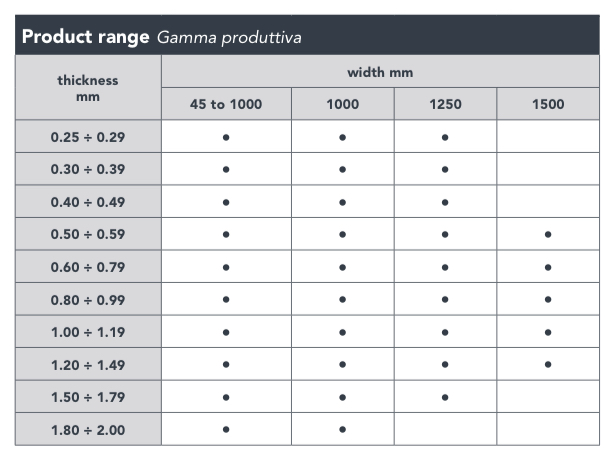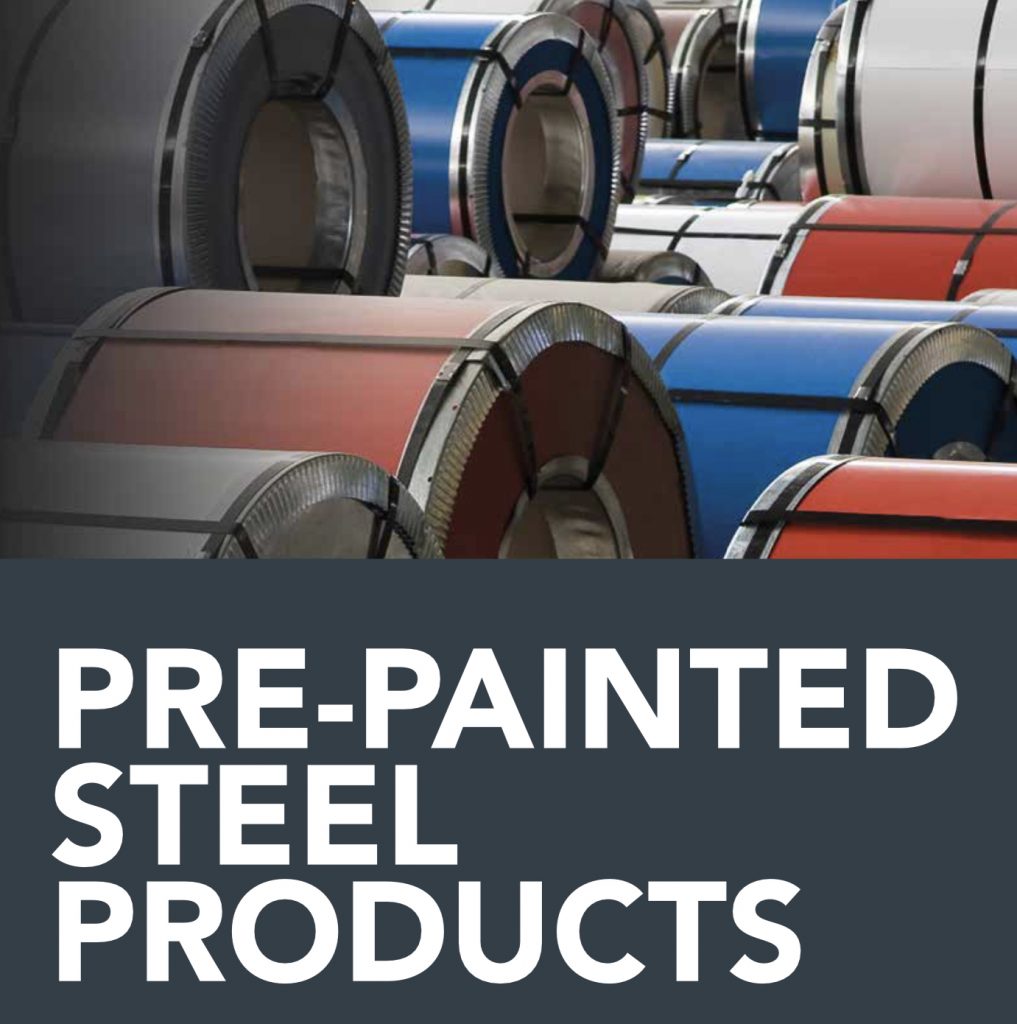I coils preverniciati vengono prodotti attraverso vari processi di lavorazione.
Per creare il supporto l’acciaio nero viene decapato con l’asportazione degli ossidi presenti sulla superficie dei suoi rotoli, rifilato sui suoi bordi, per assicurarne una larghezza costante, e sottoposto al trattamento di skinpassatura, per ottenerne una planarità pregiata. Dopo essere stati decapati, i coils possono quindi essere laminati a freddo per ridurne lo spessore, inviati al ciclo di ricottura statica e di skinpassatura finale, oppure all’impianto di zincatura a caldo. Una volta creato il supporto metallico si alimenta la linea di preverniciatura che a questo punto è pronta per la produzione dei coils preverviciati.
La preverniciatura dell’acciaio viene effettuata grazie al processo continuo di coil coating, un sistema all’avanguardia atto a realizzare prodotti sempre migliori, di qualità superiore, ottenuti con metodi più veloci e di minore impatto ambientale.
La flessibilità del processo coil coating rende possibile l’offerta di un’ampia gamma di finiture superficiali e di diversi colori: ad oggi oltre 140 cicli standard di verniciatura e finitura su entrambe le facce del materiale.
La scelta del sistema verniciante dipende altresì dal luogo in cui verrà installato. Le performance di durata del prodotto e del colore sono strettamente legate all’esposizione o meno a determinate condizioni ambientali: in ambienti industriali severi e costieri, il sistema verniciante e il suo colore sono soggetti a forti aggressioni chimiche che ne deteriorarono l’aspetto visivo e indeboliscono il sistema stesso, qualora non dovesse essere stato studiato ad hoc. La scelta del sistema verniciante migliore deve essere dunque il frutto di una stretta sinergia tra clienti, verniciatori e fornitori di vernice, per la creazione di un prodotto adatto a ogni esigenza sia in termini di estetica sia in termini di requisiti tecnici.
La capacità produttiva prevede la lavorazione di coils secondo gli standard della norma EN 10169, per una fattibilità dimensionale di spessori tra 0,25 e 2 mm, larghezze comprese tra 600 e 1.500 mm. I settori di utilizzo sono molteplici, edilizia industriale, edilizia civile, trasporti, elettrodomestico, automotive, imballi e arredo, per i derivati, nastri, lamiere e bandelle anche per il commercio.

Pre-painted Coils
Pre-painted coils are produced through various manufacturing processes.
To create the support, black steel is pickled with the removal of the oxides present on the surface of its rolls, trimmed on its edges, to ensure a constant width, and subjected to the skin pass treatment, to obtain a valuable flatness. After being pickled, the coils can then be cold rolled to reduce their thickness, sent to the static annealing and final skinpassing cycle, or to the hot-dip galvanizing plant. Once the metal support has been created, the pre-painting line is fed and at this point it is ready for the production of the pre-close coils.
The prepainting of steel is carried out thanks to the continuous coil coating process, a cutting-edge system designed to create ever better, higher quality products, obtained with faster methods and with less environmental impact.
The flexibility of the coil coating process makes it possible to offer a wide range of surface finishes and different colors: to date over 140 standard painting and finishing cycles on both sides of the material.
The choice of the painting system also depends on the place where it will be installed. The durability performance of the product and color are strictly linked to the exposure or not to certain environmental conditions: in severe and coastal industrial environments, the painting system and its color are subject to strong chemical aggressions which deteriorated its visual appearance and they weaken the system itself, if it has not been studied ad hoc. The choice of the best paint system must therefore be the result of a close synergy between customers, painters and paint suppliers, for the creation of a product suitable for every need both in terms of aesthetics and in terms of technical requirements.
The production capacity involves the processing of coils according to the standards of the EN 10169 standard, for a dimensional feasibility of thicknesses between 0.25 and 2 mm, widths between 600 and 1,500 mm. The sectors of use are manifold, industrial construction, civil construction, transport, household appliances, automotive, packaging and furniture, for derivatives, tapes, sheets and strips also for trade.

